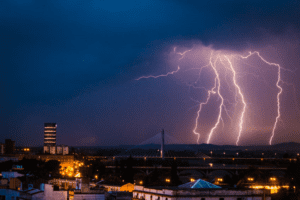This audio was created using Microsoft Azure Speech Services
Ever notice how healthcare facilities are classic plot devices in many disaster films? They’re cast as either places to avoid – as in most zombie movies – or as places of refuge, where the characters work hard to overcome the odds. If I had the choice, I think I’d make a hospital my place of refuge.
In fact, this has proven to be the case during many national and international calamities. Most disasters, weather-related or otherwise, almost always include a loss of power which leaves us in shambles. Ten years ago, a blackout crippled large areas of the U.S. and Canada, leaving some 50 million people in the dark. Over one hundred power plants crashed in cascade and collectively shut off 61,800 MW of power consumption, causing at least 6 billion dollars in economic losses. Experts called it a “once-every-25-years” event. Some even say we can also expect a ‘once in a century blackout’ that would be three times bigger than that event in 2003, stopping 186,000 MW or about one quarter of all the electricity in the U.S. Natural disasters have already cost the world $3.8 trillion (US) since 1980. Imagine the economic impact a blackout that large would have.
The electrical grid: world’s largest machine
Setting aside for a moment that our grandparents’ generation was willing to spend on electrical infrastructure and ours not so much (and that’s a whole other discussion, believe me), cascading failures are part of our modern power grid and are difficult if not impossible to prevent. It’s probably going to get worse due to the effects of climate change on our weather, combined with a lack of incentives to upgrade grids that were designed decades ago. In the US, for example, the last four years saw 80 weather-related outages per year, on average — more than double the average frequency observed during the previous five years.
Without backup power supplies,people get trapped in elevators and buildings. Subway systems fail. Water stops running because there are no electrical pumps to pressurize the lines. In hospitals, there would be no HVAC or water pressure, no way to sterilize instruments, loss of refrigeration and cooking in cafeterias. Physicians would have no way to take or to view X-rays, and staff couldn’t register or transport patients and supplies between floors without working elevators. If outages are widespread, at-home patients will also come to a healthcare facility looking for treatment or for access to backup electricity.
Testing = better resilience
Besides meeting critical power regulations, hospitals know that testing their backup power systems helps them establish appropriate procedures when faced with a possible widespread or extended power outage. But even if emergency backup systems perform perfectly, it can still be difficult to manage and track functions across the entire system. Luckily there are backup generator testing systems available that can provide near real-time system status information to help staff manage and coordinate their response schemes.
These test systems can also auto-generate mandatory monthly reporting, making it easier and more efficient for staff to provide appropriate information to regulatory authorities, like the Joint Commission and the National Fire Protection Assocation (NFPA). An added bonus is that these reports help staff become more knowledgeable about the electrical system, and help put safe work practices in place for times when disasters are forecasted or when they strike.




